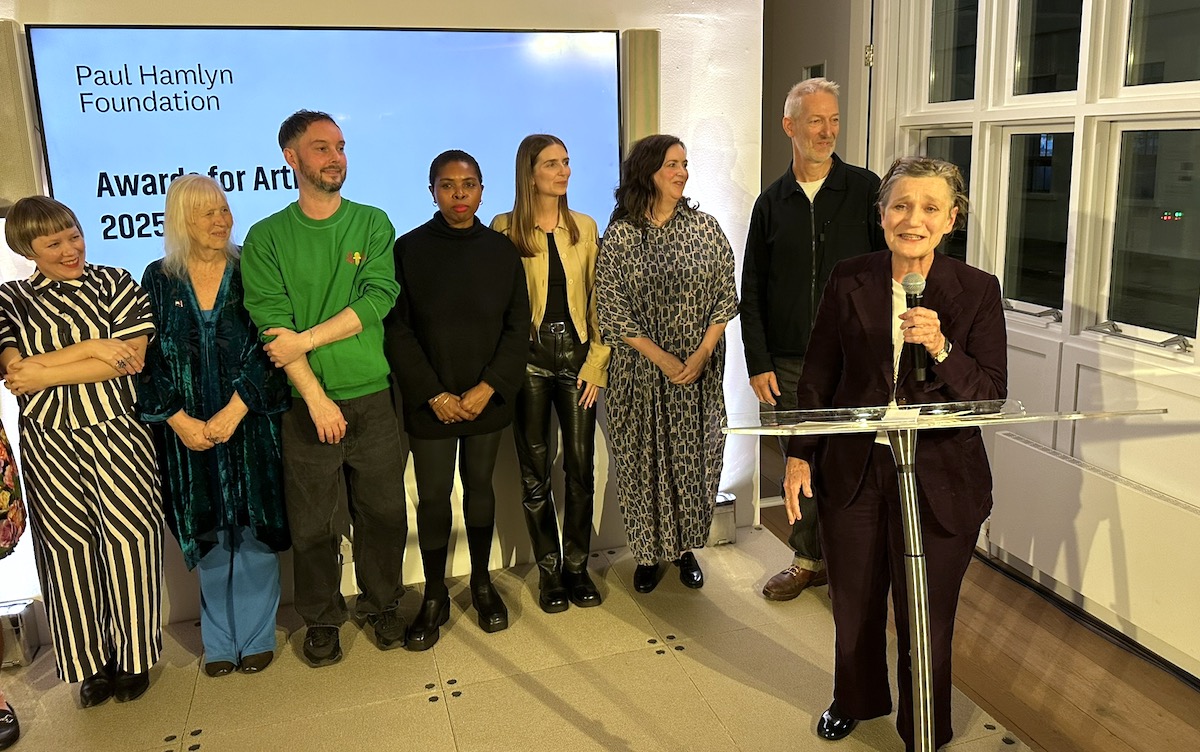The Paul Hamlyn Foundation’s Awards for Artists is a rare beast in the UK: serious money, no strings, and an attitude that suggests artists deserve oxygen rather than more hoops to jump through. This year’s cohort, announced tonight at a buoyant gathering in central London, splits neatly down the middle: five visual artists, five composers, all given £75,000 to steady or stretch their practice as they see fit.
The visual artists — Karla Black, Maeve Brennan, Alex Hartley, Edwin Mingard, and Ima-Abasi Okon — represent a broad sweep of approaches, from Black’s precarious material alchemy to Brennan’s long-form documentary work. The composers — Nwando Ebizie, Angeline Morrison, Maggie Nichols, Alex Neilson (also known as Alex Rex), and Hanna Tuulikki — cover an equally unruly terrain, where folk traditions, operatic futurism, improvisation, and ecological storytelling all jostle together.

It’s worth pausing on the structure of the award, because it still feels radical even after three decades: nominees are put forward by peers, judges are refreshed each year (this time chaired by Jane Hamlyn for visual art and Kevin Le Gendre for composition), and funding is delivered with absolutely no commission attached. In a landscape where most “opportunities” come shrink-wrapped in administrative labour, deadlines and expectations, this remains one of the few that says: go on, get on with it.
Jane Hamlyn herself underscored the point tonight, noting the strain of simply keeping a career afloat. “Most opportunities require additional work,” she said, “but rarely do they recognise the difficulty of sustaining a career as an artist.” Le Gendre, for his part, praised the “strong-willed and courageous” spirit of this year’s composers — not in the abstract, but in the messy, unpredictable sense of people making work without a safety net. The recipients themselves form a small map of current artistic energy across the UK.
Black continues to coax sculpture out of powder, cellophane and cosmetic debris — that fragile/forceful tension she’s made her signature. Brennan digs into the political memory of landscapes and materials through patient, relational filmmaking. Hartley, always hovering between wilderness and architecture, has recently folded solar technology into standing-stone-like sculptural forms. Mingard’s socially engaged practice keeps testing what collaboration can actually mean, not just what it promises. And Okon, whose installations weave sound, sculpture and language together, recently occupied all ten galleries of the Van Abbemuseum’s old building — an astonishing territorial claim for any artist at mid-career. And the composers come carrying their own storms:
Ebizie — who moves between Afrofuturist pop, sensory installations, and expansive sonic ritual — continues to build her operatic world, Hildegard: Visions. Morrison rewires English folk from the inside, pulling history and diaspora into the frame. Nicols, a long-standing force in community improvisation, is amassing a daily archive of songs. Neilson (also known as Alex Rex) sits somewhere between experimental folk and psychedelic fever dream, still anchored in percussion but expanding his narrative scope. Tuulikki’s ecological compositions — part myth, part mourning, part choreographic spell — feel painfully of the moment.
Since 1994, the awards have distributed £12 million to 367 artists, a quiet counterweight to a political climate that often dismisses the arts as optional. The Foundation — now one of the UK’s largest independent funders — keeps insisting, gently but persistently, that creative labour is social labour.
Tonight’s announcement wasn’t a flashy affair, but it had a warmth to it: the sense that someone, somewhere, understands the fragility of making work in Britain right now. Ten artists walked away with the means to breathe. And in this climate, that’s not just generosity — it’s intervention.
Top Photo: P C Robinson © Artlyst 2025
Read More
Visit

